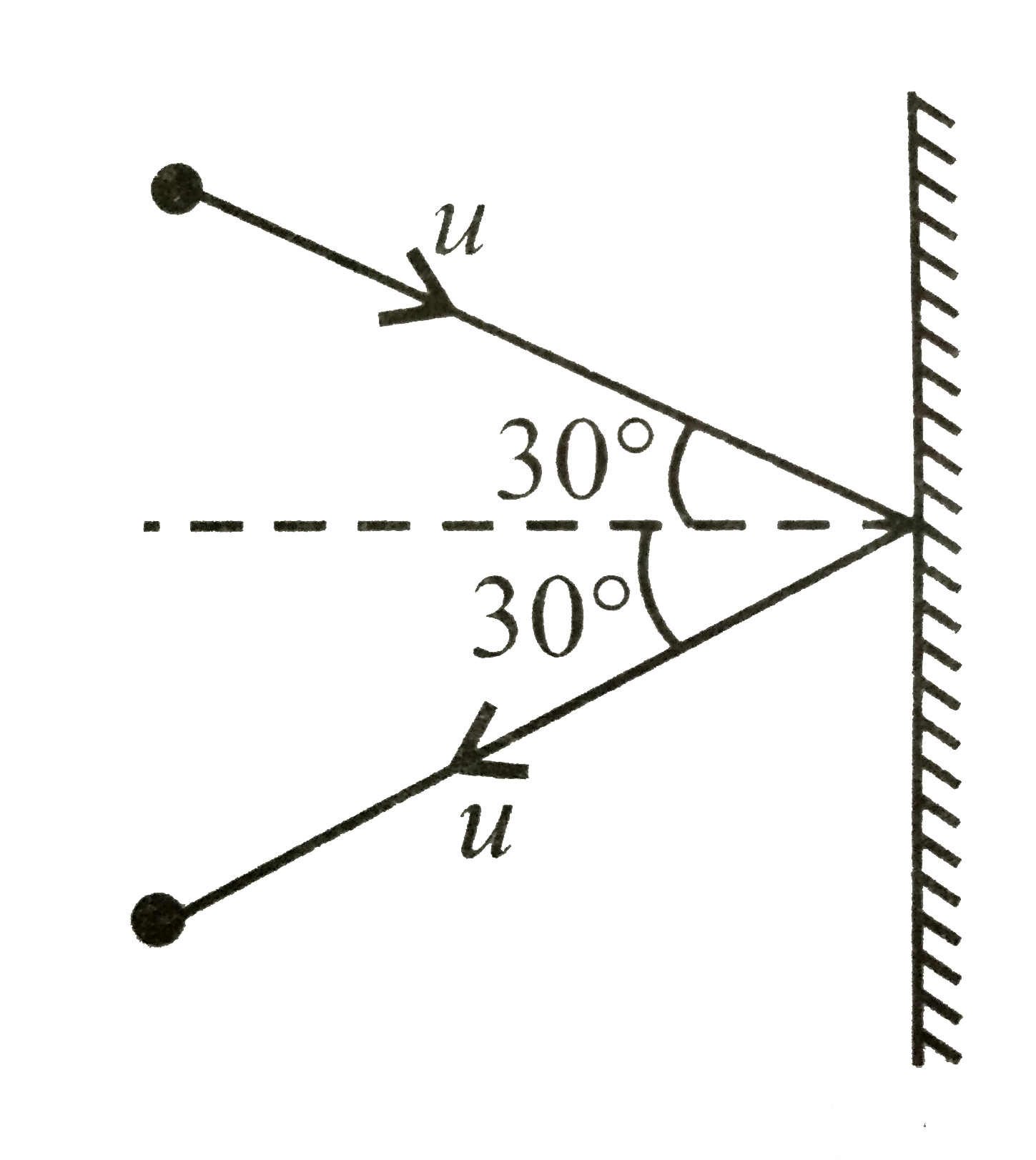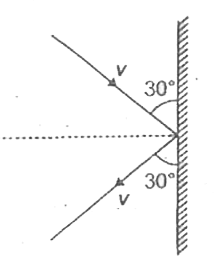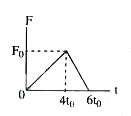A ball of mass m collides with a wall with speed v and rebounds on the same line with the same speed. If the mass of the wall is taken as infinite, then the work done by the ball on the wall is
zero
The correct Answer is:D
To solve the problem of finding the work done by a ball of mass m that collides with a wall and rebounds with the same speed v, we can follow these steps:
Step 1: Understand the scenario
The ball collides with a wall and rebounds with the same speed. The mass of the wall is considered infinite, which means it does not move or change its state due to the collision.
Step 2: Define work done
Work done W is defined as the change in kinetic energy of the system. Mathematically, it can be expressed as:
W=ΔKE=KEfinal−KEinitial
Step 3: Calculate initial and final kinetic energy
- Initial Kinetic Energy (KEinitial):
KEinitial=12mv2
- Final Kinetic Energy (KEfinal):
Since the ball rebounds with the same speed v, its final kinetic energy is:
KEfinal=12mv2
Step 4: Calculate the change in kinetic energy
Now, we can find the change in kinetic energy:
ΔKE=KEfinal−KEinitial=12mv2−12mv2=0
Step 5: Conclusion about work done
Since the change in kinetic energy is zero, the work done by the ball on the wall is:
W=0
Final Answer
The work done by the ball on the wall is 0.
---
The ball collides with a wall and rebounds with the same speed. The mass of the wall is considered infinite, which means it does not move or change its state due to the collision.
Work done W is defined as the change in kinetic energy of the system. Mathematically, it can be expressed as:
W=ΔKE=KEfinal−KEinitial
- Initial Kinetic Energy (KEinitial):
KEinitial=12mv2
- Final Kinetic Energy (KEfinal):
Since the ball rebounds with the same speed v, its final kinetic energy is:
KEfinal=12mv2
Now, we can find the change in kinetic energy:
ΔKE=KEfinal−KEinitial=12mv2−12mv2=0
Since the change in kinetic energy is zero, the work done by the ball on the wall is:
W=0
The work done by the ball on the wall is 0.
Topper's Solved these Questions
- BOOK - NCERT FINGERTPS ENGLISHCHAPTER - WORK , ENERGY AND POWEREXERCISE - NCERT18videos
WORK , ENERGY AND POWER
- BOOK - NCERT FINGERTPS ENGLISHCHAPTER - WORK , ENERGY AND POWEREXERCISE - ASSERTION & REASON15videos
WORK , ENERGY AND POWER
- BOOK - NCERT FINGERTPS ENGLISHCHAPTER - WAVESEXERCISE - Assertion And Reason15videos
WAVES
Similar Questions
A body of mass m collides against a wall with the velocity v and rebounds with the same speed. Its magnitude of change of momentum is
View SolutionA body of mass 2kg collides with a wall with speed 100 m/s and rebounds with same speed. If the time of contact was 1/50 second, the force exerted on the wall is
View Solution
Knowledge Check
- Question 1 - Select One
A ball of mass m strikes a rigid walJ with speed u and rebounds with the same speed. The impulse imparted to the ball by the wall is
A2muBmuCzeroD−2mu - Question 2 - Select One
A ball of mass m strikes a rigid walJ with speed u and rebounds with the same speed. The impulse imparted to the ball by the wall is
 Amu sin30∘tB2mu sin30∘tCmu cos30∘tD2mu cos30∘t
Amu sin30∘tB2mu sin30∘tCmu cos30∘tD2mu cos30∘t
A ball of mass m moves with speed v and stricks a wall having infinite mass and it returns with same speed then the work done by the ball on the wall is
View SolutionA ball of mass m strikes a rigid wall with speed v and gets reflected without any loss of speed, as shown in the figure.

(a) What is the magnitude of the impulse imparted to the ball by the wall?
(b) What is the direction of the force on the wall due to the ball?View SolutionA ball of mass 0.5kg moving with a velocity of 2m/s strikes a wall normally and bounces back with the same speed . If the time of contact between the ball and the wall is 1 millisecond , the average force exerted by the wall on the ball is
View SolutionA ball of mass 0.5kg moving with a velocity of 2m/s strikes a wall normally and bounces back with the same speed . If the time of contact between the ball and the wall is 1 millisecond , the average force exerted by the wall on the ball is
View SolutionA ball of mass 'm' is thrown with a speed v0 towards a bat. It rebounds along the same speed 2v0 . The variation of interaction force between the bat and ball is shown

The speed of the ball at the instant the force acting on the ball is maximum isView SolutionA ball of mass 2 kg is moving with velocity 20 m/sec strikes with the surface and rebounds with same speed, if time of contact is 0.1 sec then calculate average force on the ball.
View Solution

